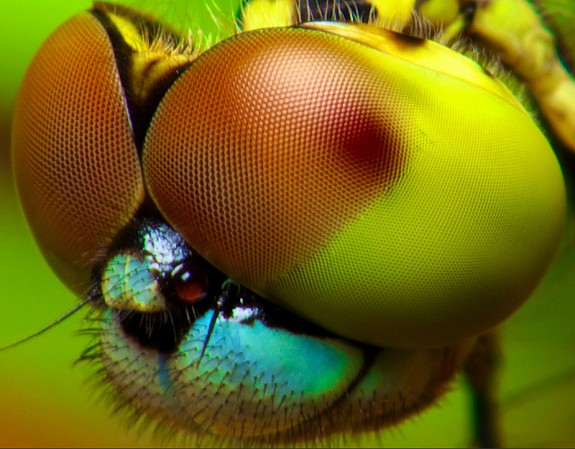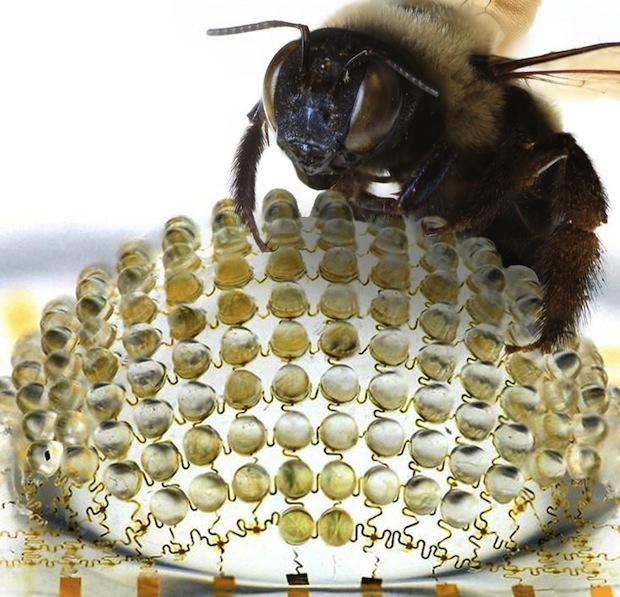This Camera Looks at the World Through an Insect’s Eyes
With 180 individual lenses, this new camera mimics an insect’s compound eye

The eye of a dragonfly is made of tens of thousands of individual segments Photo: Rudi Gunawan
The first working compound-eye-style camera can’t quite see like a dragonfly. Dragonfly eyes are made of tens of thousands of individual light sensors, says biologist Robert Olberg to the blogger GrrlScientist:
“Dragonflies can see in all directions at the same time. That’s one of many advantages of a compound eye; you can wrap it around your head..The spherical field of vision means that dragonflies are still watching you after they have flown by….If you swing at them while they are approaching they’ll usually see the net coming and easily avoid it. They are awfully good at what they do.”
With 180 facets, not 30,000, the first camera designed to mimic insects’ compound eyes isn’t quite that perceptive. But the camera, created by optical engineers led by Young Min Song at the University of Illinois at Urbana-Champaign, does offer a 160-degree view of the world, say the researchers. ”It contains 180 artificial ommatidia, about the same number as in the eyes of a fire ant (Solenopsis fugax) or a bark beetle (Hylastes nigrinus) — insects that don’t see very well,” says Nature.

Photo: University of Illinois
The compound eye camera’s expansive field of view isn’t what makes it so special. Fisheye lenses are a favorite of photographers, and they already give you a 180-degree view of the world. The difference between the compound eye camera and a fisheye lens, says PetaPixel, is that having all those different individually-operating sensors means that the camera has “a nearly infinite depth of field. In other words, they can see almost all the way around them and everything, both near and far, is always in focus at the same time.”

A fisheye lens photo of the Jefferson Memorial. Photo: Don DeBold
And, fisheye lenses cause a distinct distortion at the edges of the photos (the reason some photographers love the lenses). The compound eye camera doesn’t do that, says Popular Science.
With only 180 imaging sensor–lens pairs, the camera takes photos that contain 180 pixels. (An iPhone 4, by comparison, takes photos with 5 million pixels.) To work up to the full dragonfly-eye experience, the team will need to add more lenses and more sensors, something which they say “will require some miniaturization of the components.”
“The current prototype can only produce black-and-white, 180 pixel images,” says PetaPixel, “but future iterations could be game changing in the tiny camera game, with applications ranging from spy cams to endoscopes.”
More from Smithsonian.com:
/https://tf-cmsv2-smithsonianmag-media.s3.amazonaws.com/accounts/headshot/smartnews-colin-schultz-240.jpg)
/https://tf-cmsv2-smithsonianmag-media.s3.amazonaws.com/accounts/headshot/smartnews-colin-schultz-240.jpg)